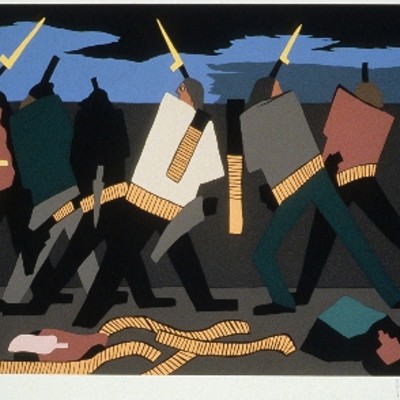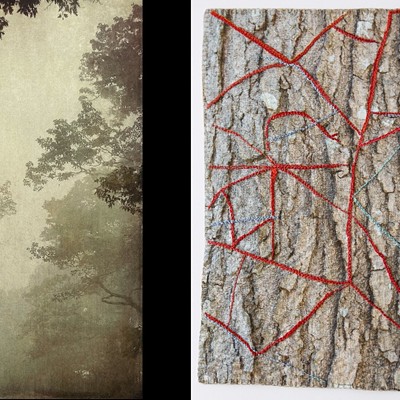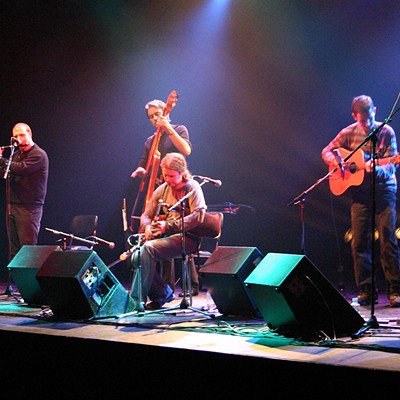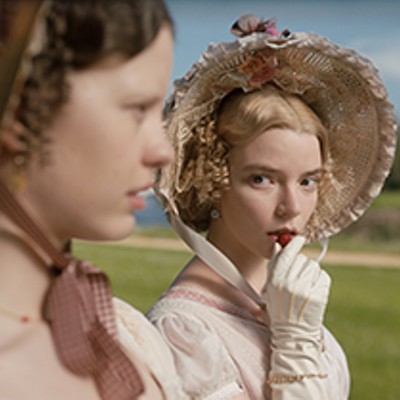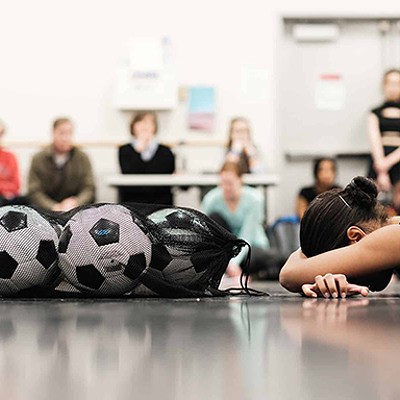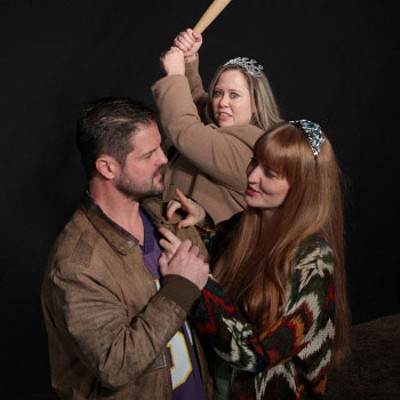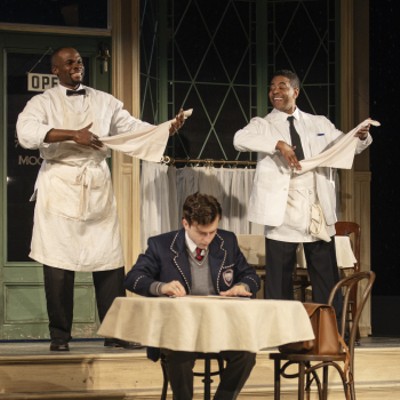On view at Etherton Gallery, her 25 works in oils and gouache picture ancestors and animals, rabbis and giants, all steeped in the heady medium of memory. The Patagonia artist readily acknowledges that many of her pieces are inspired by the Judaism of her East Coast childhood. Painted in fresh, sunny colors, they conjure up beloved figures now dead.
"A Back Room in the Castle," a 2005 oil on panel, is a red-drenched portrait of the artist's grandmother in middle age. Stylishly attired in a blue beret and ruffle-trimmed coat--the formal wear of an earlier generation--the woman has a pained look on her face, as though she can see sorrows yet to come. A yellow cat sitting on a table and a violin hanging on a wall link the work to Chagall, the Russian-Jewish artist who conjured up lost shtetl life in fanciful paintings with a surrealist edge.
A couple of Wittner portraits of old-world rabbis also emphasize the vanished world of traditional European Jewry. The bearded holy man in "Ancestor 1," 2005, an oil on panel, has an antique high-crowned hat of a type that Wittner, born in 1947, is not likely to have seen in her own childhood in Washington, D.C., and Maryland.
But not all the paintings allude to such a distant past. Wittner's brother and her late mother and father all recur multiple times. Her brother is humorously depicted on his wedding day in "The Evil Queen Marries the Court Jester," a wry watercolor of a fairy tale gone awry. Her father appears at numerous stages of his life in "A Parallel Universe," a 2003 oil on panel. He's a costumed William Tell launching an arrow at his sad childhood self; a third figure, more like the middle-aged man the artist knew as a child, raises a skeptical eyebrow to the fanciful goings on.
Wittner studied photography at the Rhode Island School of Design, but in her senior year, she lived in Europe and absorbed its Renaissance art. Both influences turn up in her mature paintings, from her disciplined compositions and croppings of photography to the jewel-like colors borrowed from van Eyck and Fra Angelico. And some of her portraits, with bold, be-hatted heads, would look only slightly out of place in a Medici palace. But she has a fresh palette, tending toward the sun-dappled, without the dark underpaintings favored by the Old Masters, and she often paints brushily, with strokes and layers readily visible.
Sometimes, her paintings even pull in the Arizona landscape that has been her home since 1972. "A Parallel Universe," the piece with the dads in triplicate, is set in the unmistakable hills of Patagonia and Sonoita. The benevolent storybook giant in "The Other Side," gently holding two pets that have passed on, reclines near dry ochre mountains--near a fantasy body of water.
"Procession," the most ambitious of the paintings, gathers all of Wittner's influences into one, adding a dollop of Maurice Sendak. This artist's deeply felt children's book illustrations nearly always portray comfortingly sturdy adults, especially the stout Jewish matrons of a particular New York past. They're a fantasy as much as that Arizona lake, but little kids believe, for a time, in the invincibility of the real-life giants who surround them.
Painted from a low, child's-eye perspective, "Procession" has five adults of massive dimensions parading across the canvas, bearing a birthday cake. A whole menagerie of dogs, five at least, sidle around the front. Wittner and her brother, depicted as small children in birthday hats, look up wide-eyed at this cavalcade of delights. Everything a kid might want is here: a halo of protective adults (some dressed in matriarchal aprons, some in fairy-tale clothes), beloved pets of happy memory and the icing on the cake. But an ominous portent reveals that this wonderful moment will be fleeting: The cake rests on a green snake that's showing its fangs.
Wittner's works are themselves part of a cavalcade, of narrative paintings. At the Etherton show Figuratively Speaking, her bright pieces are joined by monumental figurative paintings in the Standing Woman series by Tucsonan Eriks Rudans, along with a groups of devilish little saints in painted wood (including a St. Chupacabra). The big paintings are pure Rudans: beautiful nude women in beautiful flowery settings, pared down into simplified shapes, Rousseau-like. Blossoms and kitty-cat heads and striped rugs make improbable appearances all over. Unpredictably for Rudans, he's also made a touching domestic scene.
In "Mother and Child: Cats, Dogs & Reptiles," 2006, he's pictured his usual model, but this time, she's dressed at home and curled up with her young son on a couch. The family menagerie in this tender painting is almost big enough to rival Wittner's: two dogs, three turtles, five cats and counting.
The third artist is Mary Daniel Hobson, a San Francisco artist who mixes maps and milagros into her inventive mixed-media photographs. But over at the Temple Gallery, Etherton is showing still another figurative painter. Joe Forkan, a former Tucsonan who once drew a comic strip for the Tucson Weekly, has filled the walls with dozens of resplendent oils on canvas. The work is divided between nudes and architectural studies, many of them part of Forkan's laudable project to re-create a sort of Southern California version of Monet's Rouen Cathedral paintings.
Working all hours of the day, Forkan has restlessly painted and repainted images of the grungy Spurgeon building across the street from his studio in Santa Ana. Shifting blues and yellows chronicle the long journey of the hot California sun across the building's geometries. The lights glisten, and so do his luscious oils.
Forkan gave Tucsonans a taste of this splendid work at Gráficas Gallery late last year, in a show of works on paper, but this full-throttle exhibition is not to be missed.

